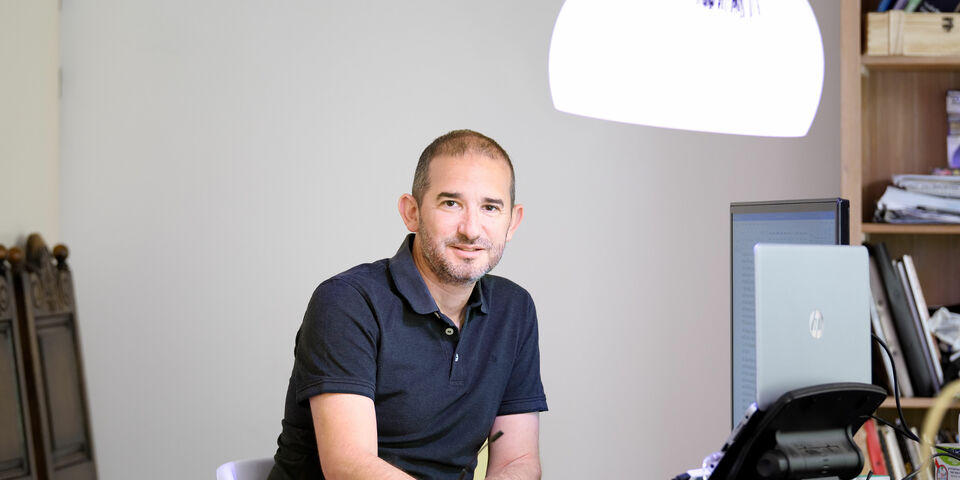Death to the slide show
PowerPoint was invented in the eighties of the last century by Robert Gaskins and Dennis Austin. Before that time, teaching was an art of converting complicated text books into understandable and succinct oral presentations accompanied by writing on a black board or if the teacher was technically savvy, overhead projection slides were used. And somewhere between this technological breakthrough and today, I feel that something went wrong. Or at least this is the conclusion I draw based on my recent teaching experiences.
The third quarter is my favorite quarter of the year. Its in Q3 that I can teach properly. A large course of approximately 200 registered students. A compulsory course that students really need to pass and a bit of electrical engineering I consider to be essential to their future.
Every year, students - not all, but enough of them - fill in a survey with their impression of teaching. And it has been already three or four years in a row that students have been complaining about my PowerPoint slides. So to make sure that my slides are finally good enough, I hired a devoted teacher assistant (TA) that has reformatted all of my slides. He took out outdated content and inserted improved graphics and content. I was really pleased with the effort. And was proud to upload the new slides on my online learning home page.
Next to the abundance of slide material, with the help of the same said TA, we have catalogued all the video lectures, and have created a meticulous table of content so that students can watch the video lectures on demand and with as little as possible waste of time by tuning to the exact minute and slide they wanted to better understand. Finally to make online studying as easy as possible I have made video recordings with solutions to all the >30 exercises that were available for students.
Armed with this feeling of online invincibility, with even more exciting initiatives led by students on which I will probably write soon, it was clear to me at least, that standing in class to repeat the slides and their content again was a pure waste of time. What happened instead was an interesting experiment me and all the students who chose to participate in our two weekly meetings (sadly not more then twenty percent of them opted to participate) took part in.
The use of PowerPoint has many possible benefits. Some may say that if you do not need to spend your time making complicated drawings and derivations on the black board, you are free to go deeper into the course material as a teacher and hence can provide a better learning experience to the students. And for the students, not needing to constantly be copying from the board and attentively listening to the teacher, you can focus on topics and concepts you find more complicated.
Since I felt comfortable to say to students, everything you need to know is already available online, I decided that I will give them every session, a short lecture - 45-60 minutes - of what I called a wrap-up. Basically, assuming they have took the time to go through the material specified for the previous lecture, I would only talk about the main ideas and concepts which made last lecture’s topic so relevant. And without making a conscious choice, I have kept my laptop closed during these sessions.
Two things happened as a result of this choice. Firstly for the students, there was a sense or urgency and relevance to my ramblings. Since what I was saying was not being simultaneously projected as a slide behind me or read out-loud from the book, it felt like genuine new material (was not really, but it did feel like it I guess). The little I made use of the board, to draw some basic ideas or formulas, was immediately copied by the participating students. And since I was going of the cuff (most of the time), the students felt asking question is clearly a part of this ad-lib teaching method. So when I tried to explain something they failed to understand, hands came up.
Secondly, for me, I was spending most of the time looking at the students and not looking at my slides. Now I could see when they were understanding and when not. I could actually sense if they were following me or not and was 'brave' enough to ask the students questions to check if they understand. And because the text book and the slides were closed I had to think really hard what I wanted to say and how to explain it. It was like re-discovering teaching all over again. It was the old pleasure of discovering the beauty in my course material and connecting with the students.
So is PowerPoint that bad? The jury is probably still out. However if you want to reconnect with your students and your own course material, I can recommend from personal experience that a black board and a chalk give both you and your students a much more immersive learning environment. Studies have shown that the more modalities used in learning (listening, seeing, writing, etc) the better the learning outcome.
We can still provide PowerPoint slides for students to browse through after the lectures, but we should spend every minute of the prescribed 'contact hours' really trying to make contact. PowerPoint does not provide the means to connect, if anything it creates an artificial sense of connection. Let’s leave PowerPoint behind us as a means to provide short presentations where no deep learning is expected and pick up the chalk again to re-discover the joy of teaching (and studying) in our classrooms.


Discussion